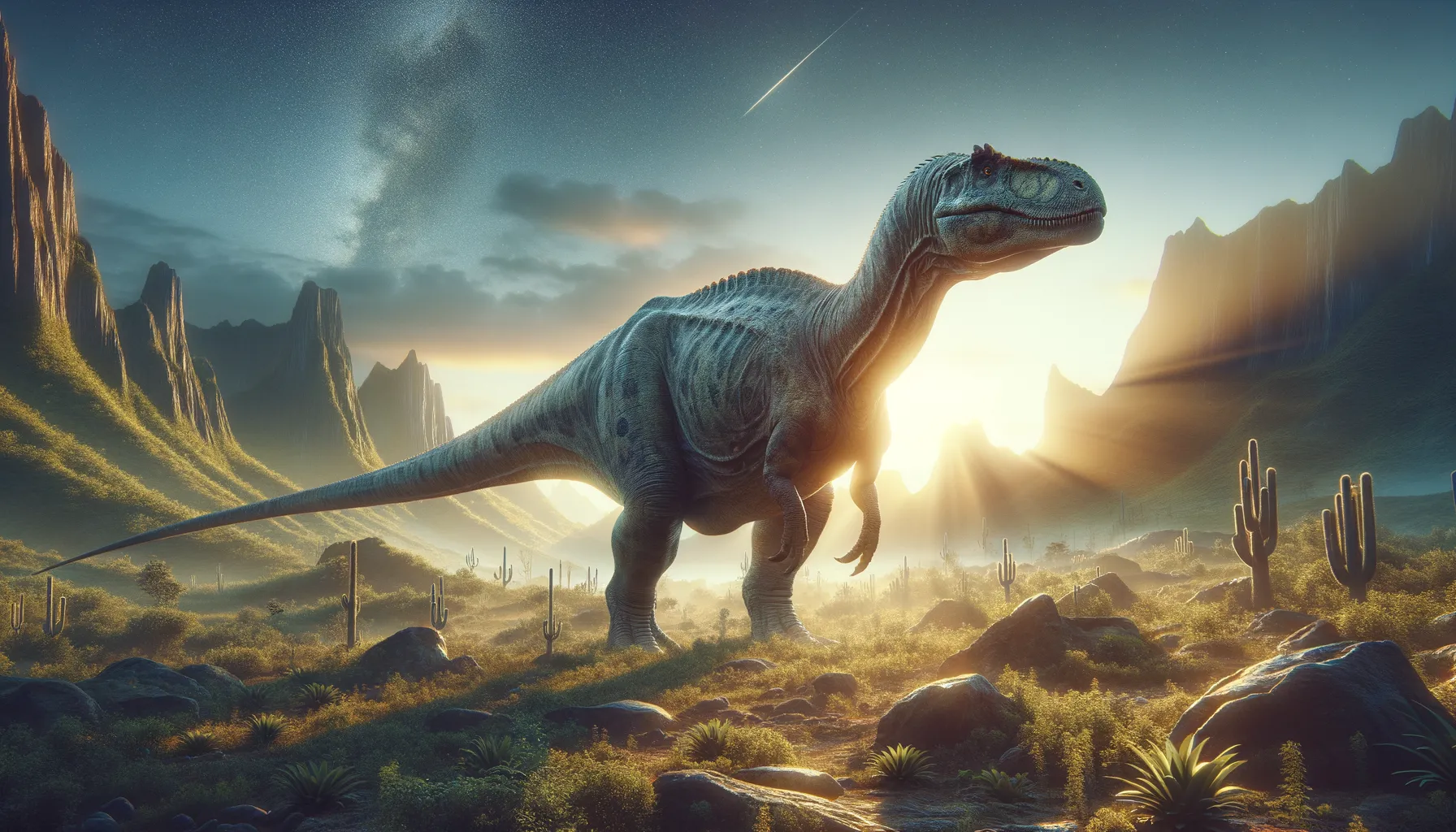
Plateosaurus
Early giant roaming the ancient lands.
Period
Triassic
Length
Measured around 20-33 feet long.
Height
Stood approximately 10 feet tall.
Weight
Roughly 1,300 to 4,000 pounds.
Plateosaurus was a robust dinosaur that roamed during the late Triassic period, about 214 to 204 million years ago. Known for its long neck and powerful limbs, it was one of the early ancestors of the giant sauropods. Fossils have been primarily found in Europe, indicating it was a common dinosaur of its time. Its physical structure suggests both bipedal and quadrupedal locomotion, adapting well to diverse environmental conditions.
Diet
Plateosaurus was primarily herbivorous, feeding on a variety of plants available in its environment. Its leaf-shaped teeth were well-suited for shredding vegetation, and it probably used its long neck to reach high and low-growing plants alike. This diet allowed it to adapt to changing landscapes and climates.
Hunting
Being herbivorous, Plateosaurus did not hunt other animals. Instead, it browsed for plants, using its strong jaw muscles to process tough vegetation. However, it had to be vigilant for predators, relying on its less common bipartite stance for potential escape.
Environmental challenges
Plateosaurus experienced dramatic climate changes that affected its habitats, such as shifting from arid to more vegetatively rich environments. This required it to adapt to varying food availability and water resources. The competition with other herbivores and occasional predators likely influenced its behavioral and physical adaptations. During its lifetime, it had to traverse different terrains to find food and shelter.
Speed
Moderate pace with bursts of energy.
Lifespan
Estimated to live up to 20-30 years.
First discovery
Discovered in 1834 by Hermann von Meyer in Germany.
Fun Facts
- Plateosaurus lived around 214 to 204 million years ago during the Late Triassic period.
- It was one of the first long-necked dinosaurs known as a prosauropod, which were the ancestors of the giant sauropods.
- Plateosaurus could reach up to 10 meters in length, but some were smaller at around 5 meters.
- Unlike many later dinosaurs, Plateosaurus could walk on two legs or all fours depending on its needs.
- Its fossil remains have been found mainly in Europe, including Germany, Switzerland, and France.
- Plateosaurus had a small head, a long neck, and a powerful tail, which helped it with balance.
- This dinosaur was an herbivore, meaning it primarily ate plants and leaves.
Growth and Development
Plateosaurus exhibited varied growth rates depending on environmental conditions, a rare trait among dinosaurs. It could accelerate or slow its development in response to resources availability. Young Plateosaurus might have formed groups for protection before eventually dispersing to find food individually. This strategy likely increased their survival chances during the harsh Triassic landscapes.
Habitat
Plateosaurus inhabited a range of environments, from dense coniferous forests to open plains with sparse vegetation. Such diversity allowed it to exploit a wide range of food sources and avoid competition. The presence of rivers and lakes provided essential water sources and lush plant life. Seasonal changes in its habitat might have necessitated migrations to more favorable locales.
Interaction with other species
Plateosaurus shared its habitat with various other dinosaur species, some competitive for food resources. It had to coexist with smaller herbivores and evade larger carnivores, fostering a dynamic ecosystem. Its physical stature helped it defend against predators but also required ample food. Interactions were likely minimal and avoidance was key for survival.
Natural lifespan
Under optimal conditions, Plateosaurus could naturally live for approximately 20-30 years.
Reproduction
Plateosaurus laid eggs, as evidenced by fossilized nests found in some locations. They likely practiced some level of parental care, with females possibly guarding and nurturing their young until they were more self-sufficient. Nest sites found in certain fossil beds indicate they might have gathered in groups to lay their eggs, enhancing survival rates.
Social behaviour
While there is limited evidence of highly social behavior, Plateosaurus might have formed loose groups during certain life stages, particularly among juveniles. These groups offered protection against predators. Adults, however, appeared more solitary in seeking food, using their size and strength as deterrence against threats. Social interactions were minimal outside of breeding seasons.
Fossil locations
Plateosaurus fossils are predominantly found in Central Europe, especially Germany and Switzerland. These locations have provided numerous well-preserved bones, helping paleontologists reconstruct its lifestyle and behavior. The abundance of finds suggests it was a widespread and successful species during its time. Fossilized nests have also been discovered, providing insights into its reproductive habits.
